National Waterways Museum
(The
Boat Museum)
Ellesmere, Cheshire
|

Featured Location Guide |
| The National Waterways
Museum, Ellesmere Port covers over 7 acres of the historic canal port. It was
designed by Thomas Telford under the direction of William Jessop, and was
a working canal port until the 1950s. The layout of locks, docks and warehouses
as well as the pump and engine room which provided the power for boats and
cranes, blacksmiths forge and stables recreate what life was like at the turn of
the century.
In 1792 several Shropshire businessmen planned
to construct a canal which would connect the rivers Severn, Mersey and Dee and
in 1793 parliament granted permission to begin its construction. The Canal basin
where the Ellesmere Port to Chester Canal connected via Whitby Locks became
known as Ellesmere Port. The Ellesmere Canal was later renamed the Shropshire
Union Canal. Following the opening of the Manchester Ship Canal in 1894 it
became a major port for both people and goods and the town of Ellesmere grew to
accommodate this. Today the Boat Museum occupies a large area of the former
canal port.
On arrival from the car park you enter the
information/visitor centre which has large glass windows overlooking the
majority of the site, immediately outside is a canal. Once through the visitor
centre and outside you can see the scale of what there is to look at, with
buildings, waterways, and canal boats.
|
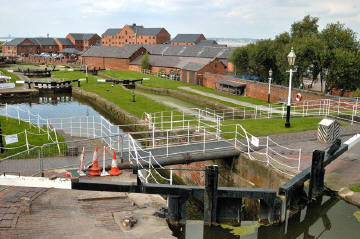 
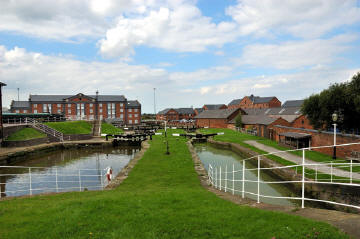  |
| On site you can explore the former canal port
and experience life aboard a collection of canal and river boats, as well as
discover the stories of the people who worked on the canals and rivers.
Buildings on site recreate this history as well as some now housing galleries
and displays of canal life and port activity.
  Click
on the small images Click
on the small images
to see larger versions |
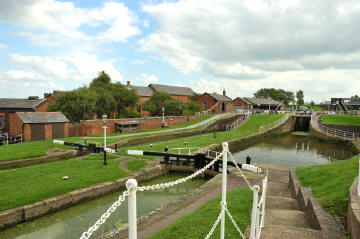  |
So what can you see:-
| Toll House dating back to 1805 was the
centre of the docks operations. It also houses the orientation room giving
details of the site and helping you to plan your visit. Island Warehouse was built in 1871 to
store grain. Today you cross a floating pontoon bridge to enter an
exhibition looking at How to build a boat. Here you can explore the history
and development of boat building using touch screen computers and other
interactive displays. On the upper floors, you can find out about the social
history of canals what life was like as a canal, boat or dock worker. There is
also an area looking at the history of the Manchester Ship Canal, which is still
used for industry and leisure.
Pump House - houses the steam driven
pump engines which supplies power to the hydraulic cranes and capstans around the dock.
Power Hall houses the engines that
supply the power for a variety of boats and other related canal activities.
Blacksmith's Forge - originally used as
the company's ironworks. Today its used by the resident blacksmith.
Stables - where the horses and pigs
would have been kept. Find out how horses were used to pull the narrow boats and
barges before steam power was invented.
|
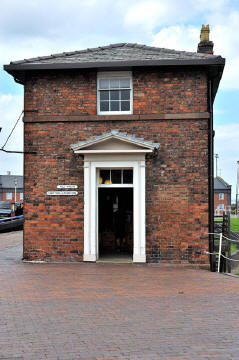

 The Toll House
The Toll House |
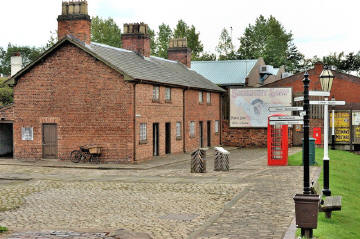  |
And step back in time into Porters Row, the
dock workers’ cottages and see how people lived from the 1840s to the 1950s.
This is a row of four original dock worker cottages built originally in 1833
each one set up in a different time frame in history to recreate what living as
a dock worker would have been like.
The largest collection of floating canal boats,
where you can enter the cabins and discover how people lived, worked and raised
families in this small space.
Working Lock.
Canal crafts are also demonstrated and include
fender making, leather working, painting and rope making.
|
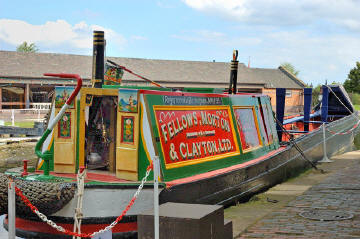  |
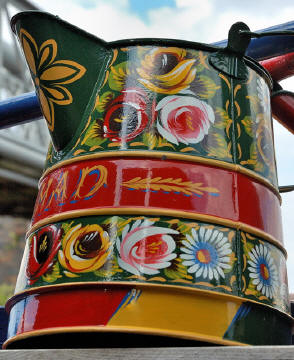  |
To capture the essence of the canal and port
history allow at least 3-4 hours for your visit. That way you can explore the
site and through the displays and exhibitions understand what it must have been
like living and working on the canals in this point in history as well of course
take pictures of the impressive buildings and colourful canal boats. Of course
being a waterway you may also get to see waterfowl enjoying the sunny day a
moorhen or coot or like when we visited there was a family of Swans with a number of cygnets!
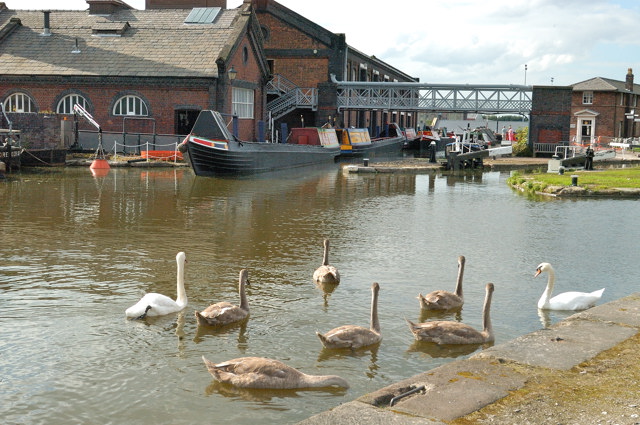
 A view from the entrance building across the canal to some of the buildings you
can visit.
A view from the entrance building across the canal to some of the buildings you
can visit.
.
Planning Grid
|
Location: |
The Boat Museum, Ellesmere Port, Cheshire |
|
Grid Reference: |
SJ405772 |
|
Getting there: |
Located just off junction 9 of the M53, follow
the brown tourist signs to The Boat Museum. |
|
Access: |
Due to the nature of the historic dock
complex, parts of the pathways around the site are cobbled and uneven.
|
|
Parking: |
Ffree car parking at the museum including
coach drop off point immediately outside the front entrance and designated
disabled parking bays. |
|
Facilities: |
cafe, shop |
|
Things To Do,
See and Photograph: |
|
|
What to take: |
|
|
Nature highlights: |
|
|
Address: |
The National Waterways Museum Ellesmere Port
South Pier Road
Ellesmere Port
Cheshire |
|
Postcode: |
CH65 4FW |
|
Telephone: |
0151 355 5017 |
|
Opening times: |
Apr–Oct: 10am–5pm daily; Nov–Mar: 11am-4pm Thur-Sun Closed Mon-Wed Also
closed 25th and 26th Dec & New Year’s Day |
|
Charges: |
Adult: £5.50; Child: £3.60; Under 5’s: Free; Concession: £4.40
Family Adults: £4.40*; Concession £4.40
Season tickets also available giving access to
all three National Waterways Museums for a 12 month period.
See here for details

* Family groups are calculated as £4.40 per
adult (any number) and children at £3.60. |
|
Photo Restrictions: |
|
|
Other Restrictions: |
|
|
Special Needs Access: |
Parts of the pathways are cobbled and uneven.
Wheelchair access is possible to all galleries and displays and an
accessible route is displayed on the site map given to all visitors on
arrival. Accessible parking with level approach to museum, reception and
shop. Wheelchair route around museum complex |
|
Special Needs Facilities: |
Lift access to main exhibitions. Accessible
toilets. Tactile maps. Two manual wheelchairs on site for public use |
|
Children Facilities: |
soft-play area in the Island Warehouse. Parent
& baby room |
|
Dogs Allowed: |
Allowed on site although Guide dogs only can
go into cafe and museum galleries. |
|

|
Please let us know any other information that we
can add to the Further information and Planning Grids or page and any errors that you discover. Before making a long trip to any location it is always
wise to double check the current information, websites like magazines may be
correct at the time the information is written, but things change and it is of
course impossible to double check all entries on a regular basis. If you have
any good photographs that you feel would improve the illustration of this page
then please let us have copies. In referring to this page it is helpful if you
quote both the Page Ref and Topic or Section references from the Grid below. To print the
planning grid select it then right click and print the selected area.
Please submit information on locations you discover so
that this system continues to grow.
|